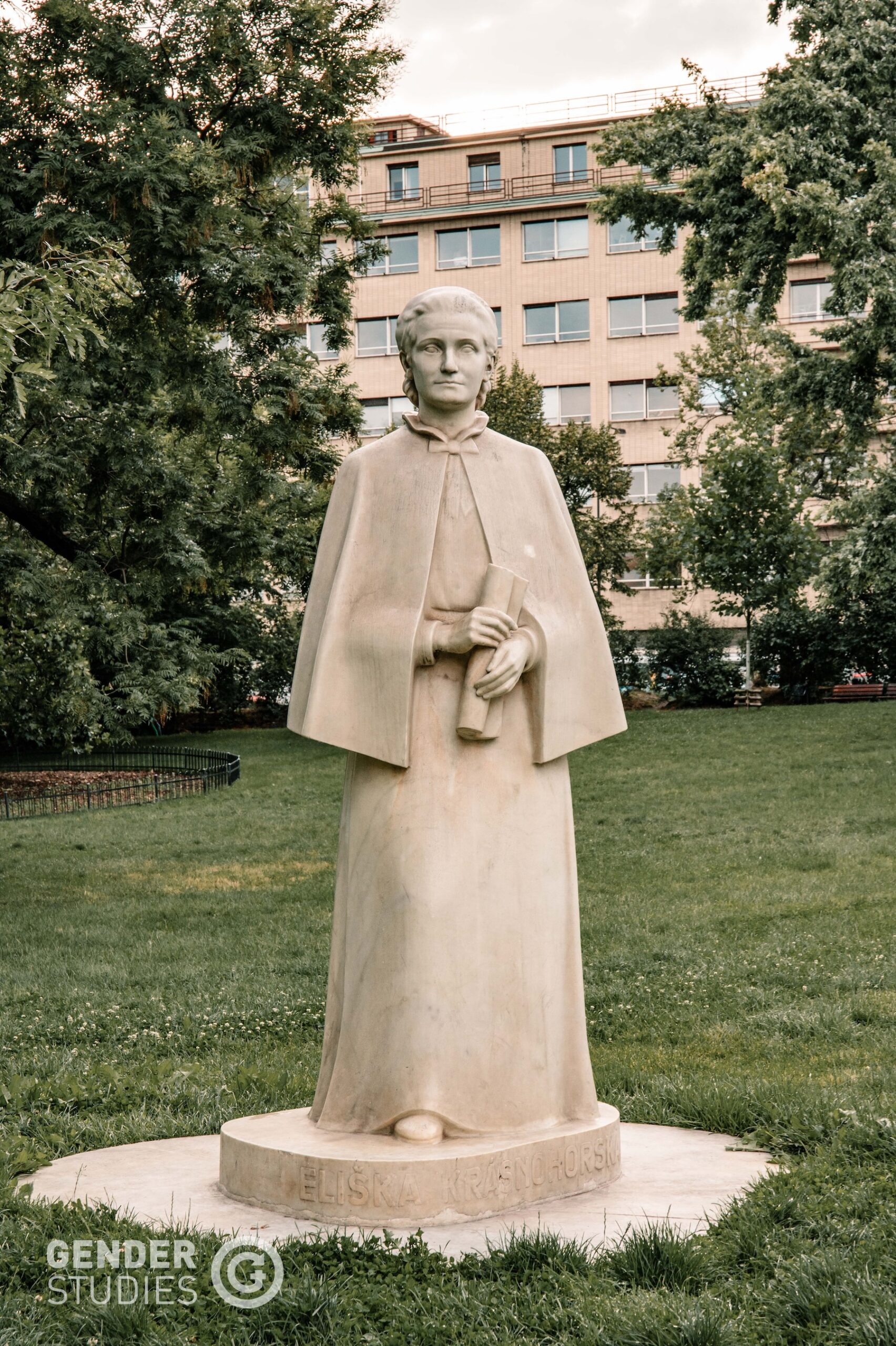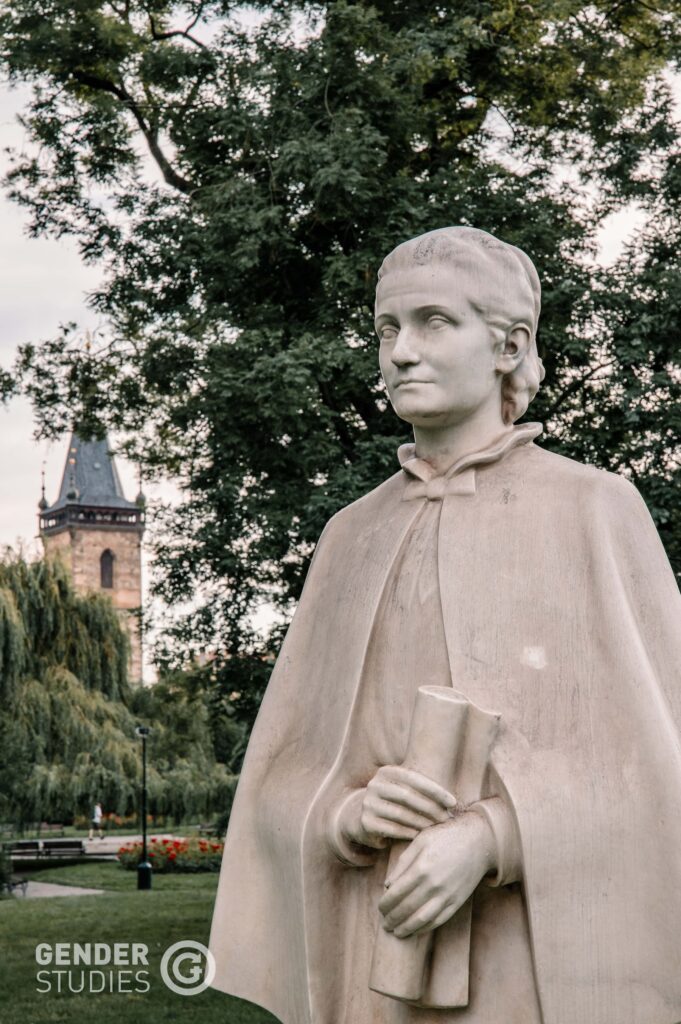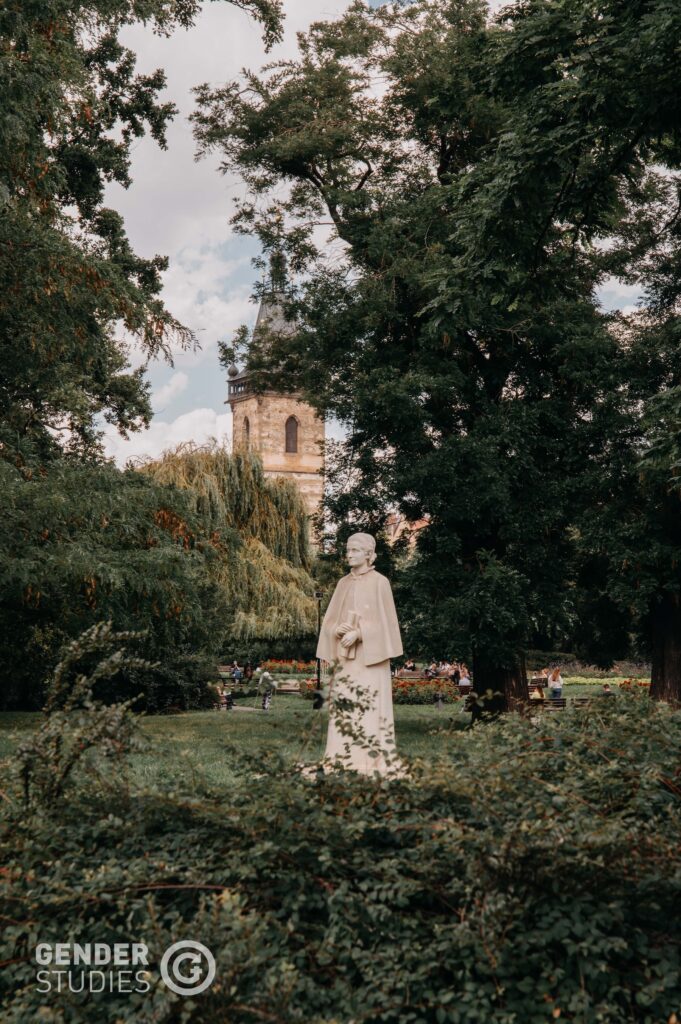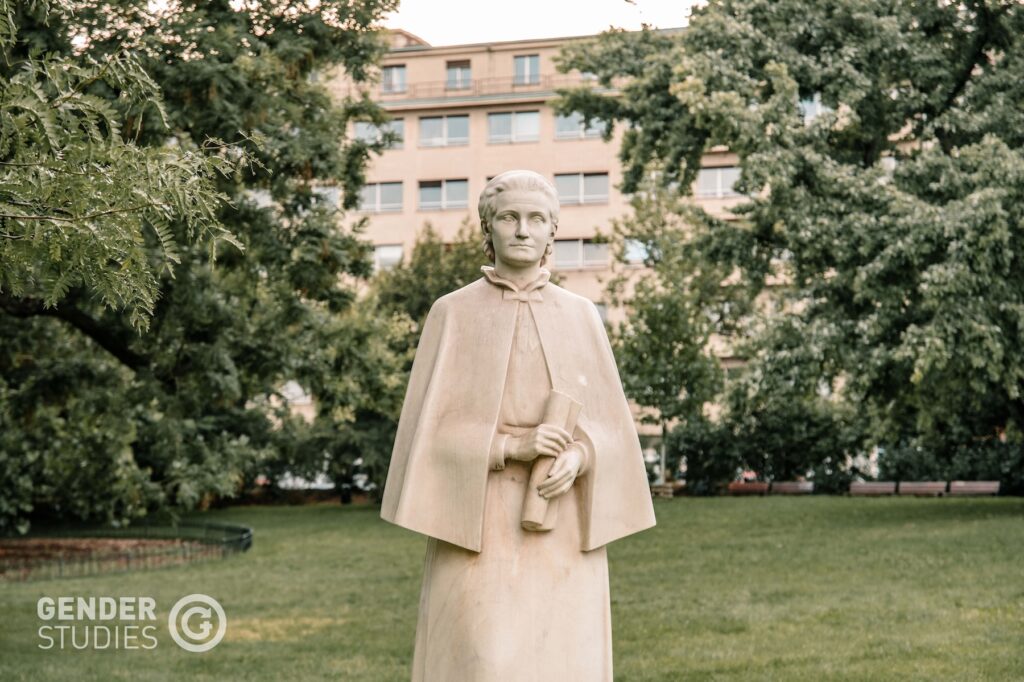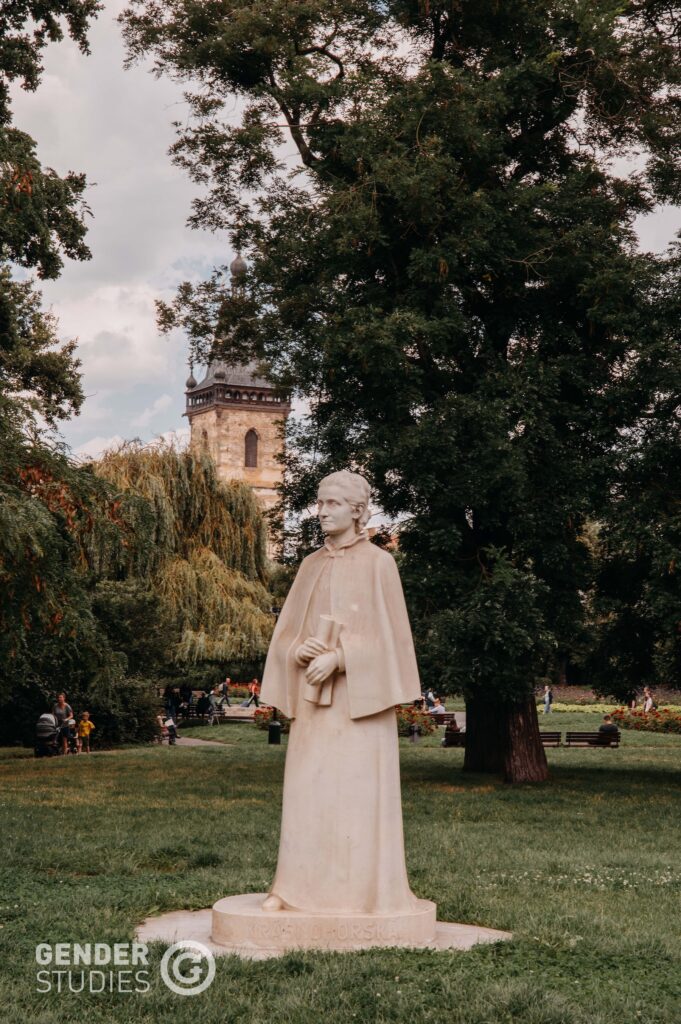The Monument to Eliška Krásnohorská
The sculpture was created by Karla Vobišová-Žáková, Czechia’s first female professional sculptor, in 1931. Commissioned by the Women’s Czech Production Society and made of Romanian marble, it received an award from the Academy of Sciences and Arts. The life work of Vobišová-Žáková is the tombstone of St. Vojtěch in the St. Vitus Cathedral in Prague.
Although the won the design competition in 1937, it was not until 2019 that the tombstone was created.
In 1982, to make room for a new metro station, the Krásnohorská monument was removed from near the road intersection and placed deeper in the park.
Eliška Krásnohorská
Eliška Krásnohorská was born on 18 November 1847 as Alžběta Pechová. As a patriot, she replaced her first name Alžběta (Elisabeth) with its Czech alternative, Eliška. She picked her pen name, Krásnohorská, based on her father’s mistaken assumption that the family had descended from the aristocratic family of Pech of Krásná Hora. She represents one of the key figures of the Czech women’s movement.
Eliška Krásnohorská was not afraid to break the conventions of her time. She attended cultural events and moved around in public without a male escort, and she performed on her own. She is known as a poet, writer, and librettist. Her famous works include the tetralogy Svéhlavička (“The Stubborn Head”), the poetry books Z máje žití, Ze Šumavy, and Ozvěny doby, the memoirs Z mého mládí and Co přinesla léta, children’s stories, and translations from English (Byron’s Childe Harold’s Pilgrimage), Russian (Pushkin’s Boris Godunov), Polish (Mickiewicz’s Pan Tadeusz), and French (the libretto of Carmen).
Who was Eliška Krásnohorská? | See online exhibition
